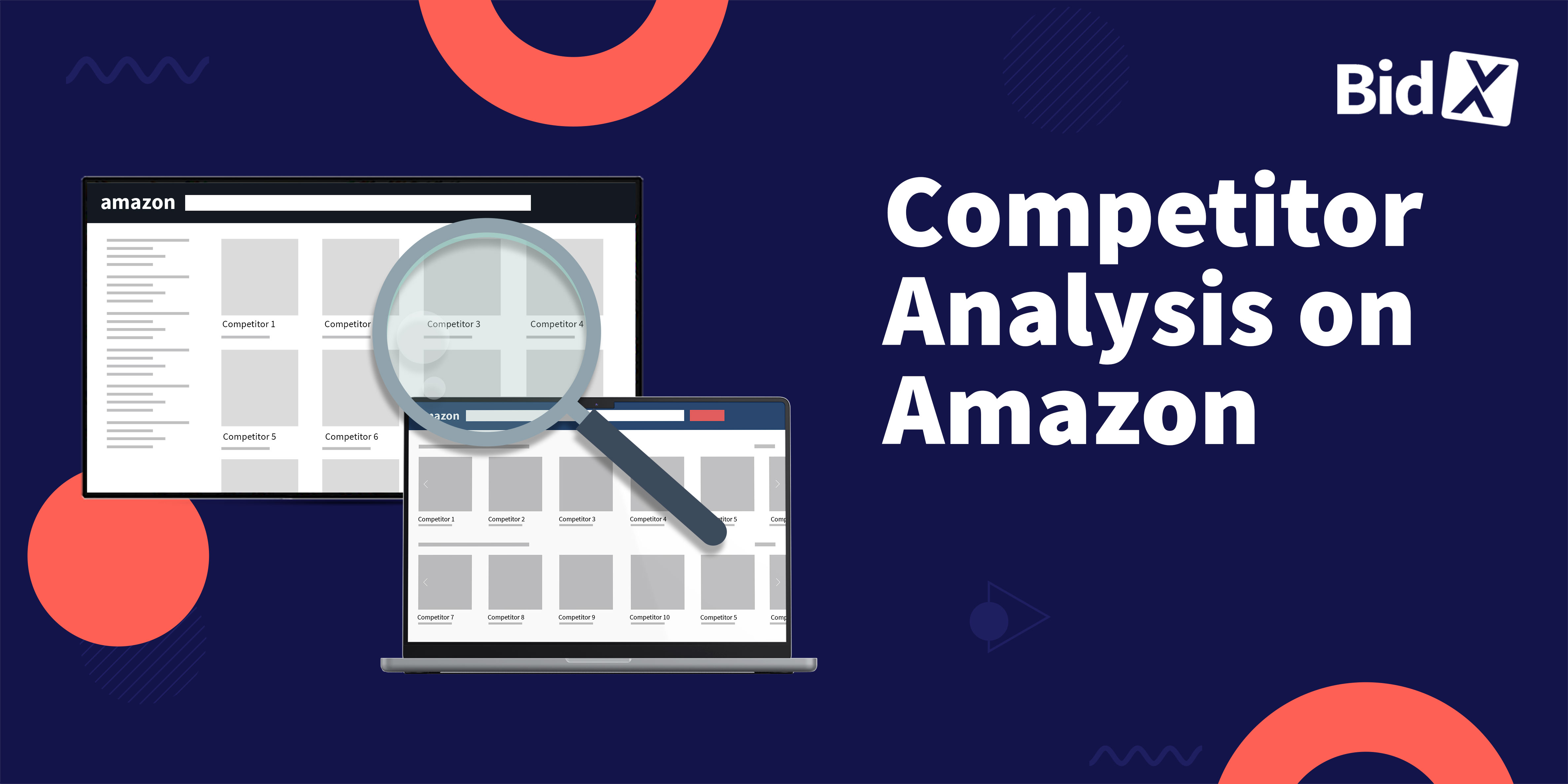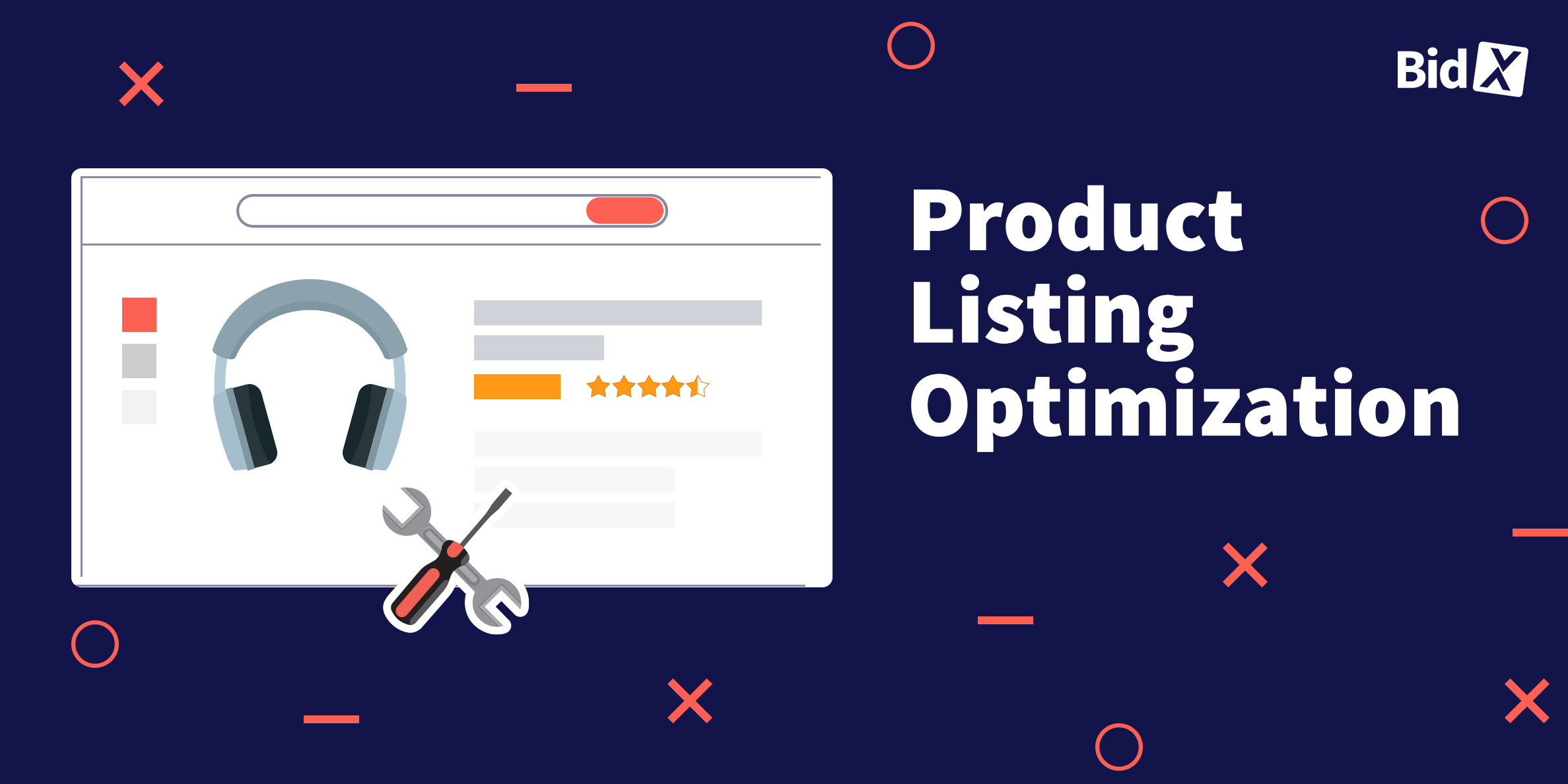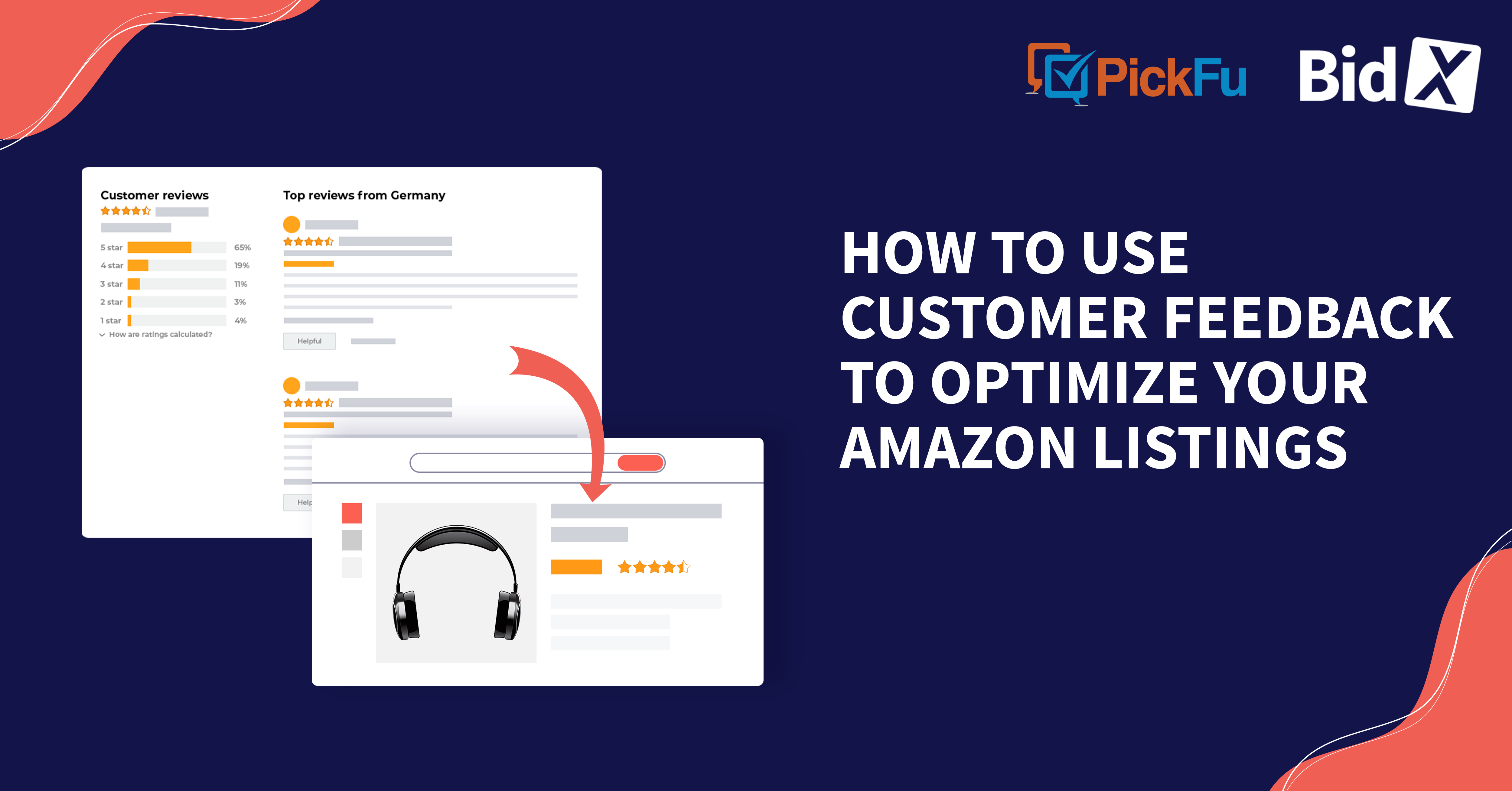How To Run a Competitor Analysis on Amazon
Amazon competitor analysis is an essential practice for sellers who want to experience long-term success on the platform. With 2,000 new sellers joining Amazon every day, you don't want the competition to outrank you in the SERPs or undercut you on price.
That's why competitor research is so important. By understanding who your competitors are and what they're doing well, you can identify areas of improvement for your product page, create a better Amazon presence, and boost sales.
But what is competitor analysis on Amazon? Where do you start? And how do you make it work for your Amazon business?
Answers and more in this handy guide to crushing the competition on Amazon.
What Is a Competitor Analysis?
Competitor analysis is the process of researching, identifying, and evaluating your competitor's performance to adjust your own Amazon business strategy. By understanding what your competitors are doing well (and not doing well), you can emulate successful tactics, spot gaps in the market to exploit, and optimize your product page to increase conversions.
Why Do You Need to Run a Competitor Analysis on Amazon?
Keeping a close eye on the competition is crucial if you want to gain the upper hand in Amazon's SERPs, price optimization, customer conversion, and other areas of business. It allows you to better understand your competition, including who they are, what strategies they're using, and why they're successful.
By thoroughly understanding the competition, you can then create higher-quality Amazon listings that could potentially outperform your competitors. This could result in more visibility and profits for your Amazon business.
How To Find Your Amazon Competitors
There are several ways you can go about finding your Amazon competitors. To keep things simple, we’ve identified two main steps:
- Broad Keyword Search
- Long-tail Keyword Search
Let's take a look at each in more detail.
Step #1) Broaden your search with a short-tail keyword
To begin, enter a short-tail keyword that relates to your product into the Amazon search bar. This keyword is typically one or two words in length and will help Amazon return a list of the strongest competitors in your niche market. Once you're in the SERPs, you'll want to look at the organic results as well as the sponsored ads that are displayed.The sponsored ads give a good overview of who is successfully running ads, so you should also look at these as well as the organic products.
For instance, let's say you're selling earplugs. If you search for just that term — "earplugs" — Amazon may pull up a wide variety of earplug-related products:

As you can tell from the above examples, there are disposable earplugs, reusable ones, soft-foam vs. hard-foam vs. silicone, "premium" earplugs, earplugs for concerts, earplugs for snoring sounds, etc.
Based on the top-selling products Amazon has pulled up, are there any features or descriptors you can add to your Amazon listing that would make it stand out from the competition?
Running a broad search once a month can be a great way to stay on top of Amazon's SERPs, identify new competitors in your niche, and make sure you're using the best keywords in your titles and descriptions.
Step #2) Narrow down your search with a long-tail keyword
Once you have a sense of who your broad competitors are, it's time to narrow down the competition with long-tail keyword research. With a long-tail search, Amazon is more likely to pull up competitors that are selling the same product as you, giving you a better idea of who your direct competitors are. To get this step right, you'll need to identify a long-tail keyword that effectively describes your product.
For instance, let's say you're selling silicone earplugs that are moldable, reusable, and noise-canceling. In this case, the long-tail keyword "reusable silicone earplugs with noise cancellation" would be much more effective than the short-tail keyword "earplugs":

In the above examples, you'll notice that the bestseller in your niche market didn't rank in the top 10 results when we used the broad keyword. However, it snagged the #1 spot in the organic results based on the long-tail search.
This is a great example of how narrowing down your Amazon competition can help you find sellers who are more closely related to your product. Take note of the top 20 most successful sellers and keep a record of their products in either a spreadsheet or your favorite research tool.
Review each listing carefully for features and attributes to include in your Amazon product page, as well as any keywords they might be targeting that you missed.
How To Analyze Your Amazon Competitors
After scoping out the competition and gathering data, it’s time to analyze what your competitors are doing well and what areas they’re lacking in. Here are some of the most important Amazon competitor metrics to note:
- Keyword use
- Product page elements (title, images, bullet points, etc.)
- Competitor pricing
- Marketing strategy
1) Identify keywords that help your Amazon competitors rank higher
Keywords are one of the most important components of Amazon SEO. If you want your products to show up when Amazon customers search for specific terms, you need to incorporate them effectively into your titles and descriptions.
There are keyword tools on the market to help you identify the ones your competitors are using to rank higher in Amazon's SERPs. Depending on the tool, simply enter the competing product's ASIN and it will pull up a list of keywords Amazon has used to rank the product.
Alternatively, you can review your competitor’s product page and pick out the keyword terms they use. Once you've compiled a list or spreadsheet, add these keywords to your Amazon product page titles, descriptions, and bullet points to improve your Amazon SEO ranking.
2) Audit your Amazon competitors’ product pages
Take a look at your competitors' product titles, images, reviews, etc., then compare it to your Amazon product page. Are there elements you can add or adjust to make yours stand out? Do your competitors have clear, compelling descriptions and well-written bullet points?
Let's break it down:
Title
Crafting the perfect product title serves a dual purpose: informing customers of what your product has to offer and helping Amazon's A9 search engine recognize its relevance.
To optimize your title, analyze keyword phrases used by top competitors and consider integrating or refining them. Are there any unique product features or unique selling propositions (USPs) you can include to stand out from the crowd? Is there anything you can add or remove from the title to help it rank higher in the SERPs?
For example, if you're selling disposable earplugs that are individually wrapped (for those customers who take hygiene to the next level!), you should mention that in the title. Think along these lines when tweaking your titles, but be careful not to overstuff them. Instead, strive to make them clear, concise, and informative.
Images
Captivating visuals can be the key to success on Amazon, as customers rely on them to gauge the appeal of a product they can't physically touch before buying.
To outshine your competitors, it's crucial to invest in high-quality images and infographics for your listing. Take a look at your top competitors' featured images in the SERPs. Are they doing something special that you may need to replicate? Do their images and videos look more inviting or aesthetically pleasing than yours?
Since on Amazon you can’t physically touch the product it is important to have a variety of images that show how the product looks, how you use it and what are the benefits.
Bullet points
Your product description should be short and to the point, as buyers usually only spend a few seconds scanning it. Here, you want to focus on your product’s main features and describe them in bullet-point format.
Consider starting each bullet point with CAPITAL LETTERS briefly stating each USP, then expand briefly on why each feature can help solve the shopper’s pain points.
Take a close look at your Amazon competitors’ bullet points and see if there’s anything you can add or refine to make yours stand out.
Reviews and ratings
Social proof such as reviews and ratings is essential for any product page. What customers are saying about your competitors can reveal insights into their buying behaviors, which you can then use to refine your listing. Are there any common complaints Amazon buyers have about the product? How can you improve your listing to address these issues and deliver a better customer experience?
In the below example, one buyer found that the silicon earplugs from Amazon Competitor A stuck to their hair:
 If your product was designed with this user experience in mind, you should mention it in the bullet points or product description. Alternatively, you can add a video showing how customers with long hair can use the product without any issues.
If your product was designed with this user experience in mind, you should mention it in the bullet points or product description. Alternatively, you can add a video showing how customers with long hair can use the product without any issues.
3) Keep an eye on competitor pricing
Amazon's price wars are real and can make or break your success on the platform. While you can't directly control competitor pricing, you can keep an eye on it and adjust yours accordingly. This is important because, if customers come across two similar products with close review ratings, they'll most likely go with the cheaper option.
Of course, you can't always match competitor pricing and still make a profit. If your product is of better quality, you should reflect that in the pricing. However, you'll want to determine your product's long-term viability through pricing. If the Amazon competition is consistently undercutting your prices, you'll need to find a way to optimize costs and remain competitive.
4) Look at how your competitors market their products
No successful business lives in a bubble, and Amazon sellers are no exception. To stay ahead of the competition, you'll need to keep an eye on the competition's marketing tactics. Are they using Amazon PPC ads? Do they have an Instagram account? Are they running influencer campaigns? Do they have a newsletter, website, or any other type of presence outside Amazon?
Analyze their marketing campaigns and see how you could emulate what works while staying true to your brand voice. If you're starting from scratch, Amazon competitor analysis can help you gain a better understanding of how to reach the target audiences that your competitors are already engaged with.
How To Use Amazon Competitor Analysis for Your Ads
So far we've discussed competitor research on Amazon as a way to optimize your product listings and form a strong defensive strategy. But competitor analysis on Amazon can also be used to form a strong "plan of attack": namely, Amazon PPC ads that target your competitors' ASINs.
Known as Product Attribute Targeting (PAT) or simply Product Targeting enables you to display your product ads on your competitors' product pages.
These ad placements can help increase your item's visibility and funnel Amazon shoppers to your product page, especially if your product is a better fit for the customer's needs.
When running a product targeting campaign, your items may appear in the "Products related to this item" carousel or the "4 stars and more" section:

It may also appear in the "Sponsored" Amazon ads below your competitor's product description and buy box, as well as the “Frequently bought together carousel”:
It's almost like being in front of a vending machine; you may have one particular item in mind, but when you browse the other options, you might be tempted to switch and try something else instead!
Final Thoughts
Amazon competitor analysis is an invaluable practice for sellers to optimize their product listings, keep up with the platform's ever-changing market dynamics, and remain one step ahead of the competition.
More importantly, it's essential to apply your competitor research toward an effective product targeting campaign. This can help you outperform your competitors by driving more traffic to your product page and increasing conversions.
To use product targeting correctly, consider using a PPC tool like BidX for bid automation, 1-click campaign creation, keyword management, and other optimization features that make the most of your ad spend.






